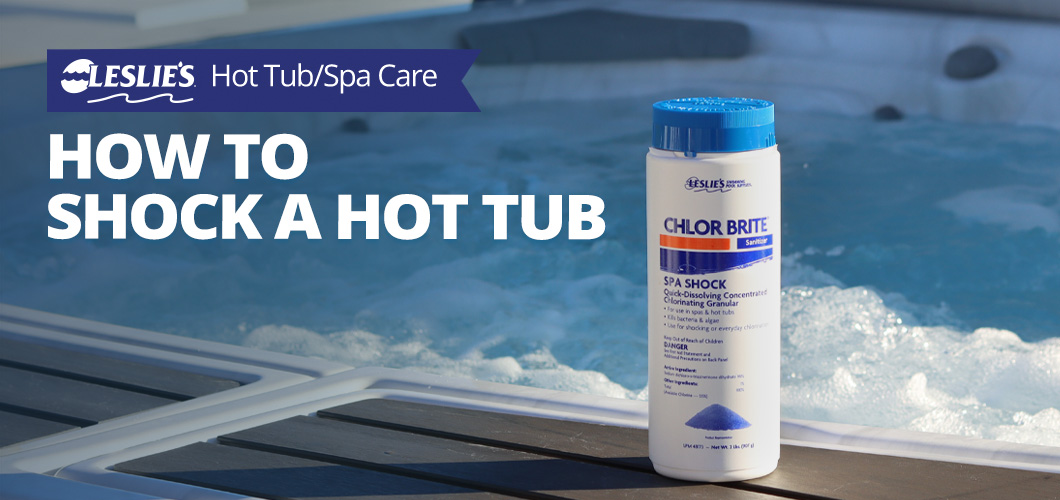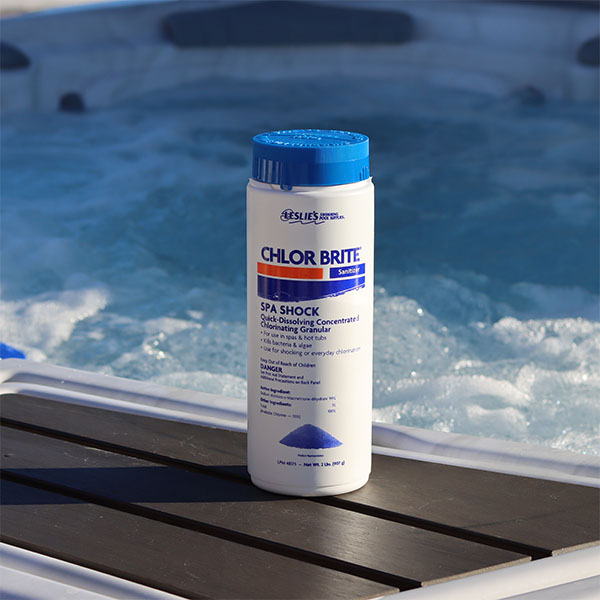
How to Shock a Hot Tub
Spa shock is an oxidizer that is used to destroy organic contaminants that have been able to escape normal daily sanitation. Oxidation involves the transfer of electrons, and when hot tub water contaminants or pathogens are oxidized, they lose electrons, and quickly expire, or cease to exist. Today's blog post is all about shocking a spa or hot tub.
What is Hot Tub Shock?
Hot tub shocks are made from a powdered form of oxidizer, either a form of granular chlorine, non-chlorine potassium sulfate salts or liquid chlorine (bleach). When using a biguanide sanitizer system (Aqua Silk), the spa shock is made of liquid hydrogen peroxide, which cannot be used in a bromine or chlorine treated spa/hot tub.
Why Do I Need to Shock a Hot Tub?
- To destroy excessive contaminants in a hot tub after use by several people
- To reactivate bromide ions into active bromine
- To kill algae, bacteria, viruses and pathogens that may escape your normal daily sanitization chemical
How to shock a hot tub with bromine
Trick question - you don't. There is no such thing as bromine shock, although many people confuse bromide ions with spa shock. Bromides (aka Bromine Boosters or Reserve) are used sparingly to boost the bromide bank, which is reactivated into bromine by using chlorine granules, or MPS (aka non-chlorine shock).
How to shock a hot tub with chlorine

Chlorine granules are available in varying concentrations or strengths, so follow label instructions closely for proper dosage. For a 300 gallon spa, 0.7 oz of chlorine granules shaken over the water surface will raise the chlorine level up to about 10 ppm. This should be done with a balanced pH (in the low range of 7.2-7.4), and with the circulation pump running on high to help distribute the shock quickly. Keep the spa cover open or removed for about 30 minutes after adding, to allow reaction gas to escape and prevent damage to the spa cover. The hot tub should not be used until the chlorine/bromine level drops back below 5 ppm.
How to shock a hot tub with non-chlorine shock
Chlorine free shock, also known as MPS, is a quick dissolving and powerful oxidizer that is popular for use in spas. It's not measured with a regular spa test strip, so following dosage instructions is important. For example, when shocking a 300 gallon spa, 1-2 oz. of non-chlorine shock is used, broadcast over the water surface, with the spa pump running.
Is Hot Tub Shock Dangerous?
Yes, spa shock can be extremely hazardous, and must be stored in a cool, dry location, safely out of the reach of children. Overdosing your spa may damage the finish, or the spa cover. And using the spa before allowing chlorine/bromine levels to subside can bleach swimsuits or cause skin irritation or breathing difficulties.